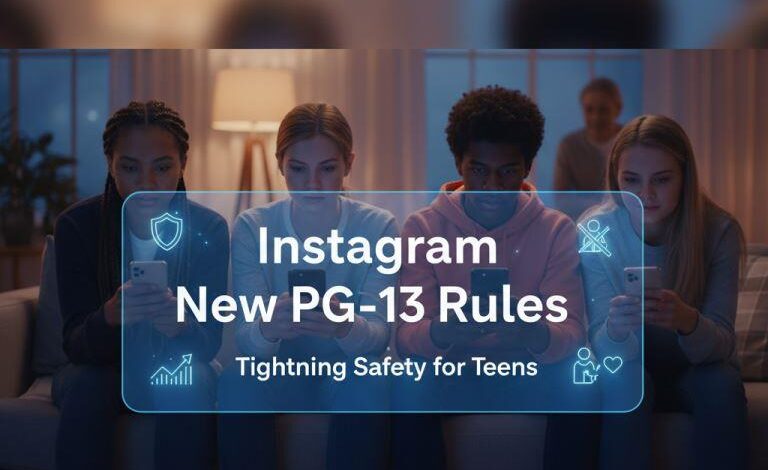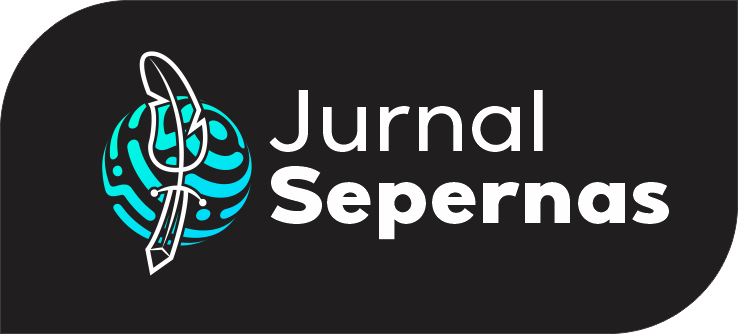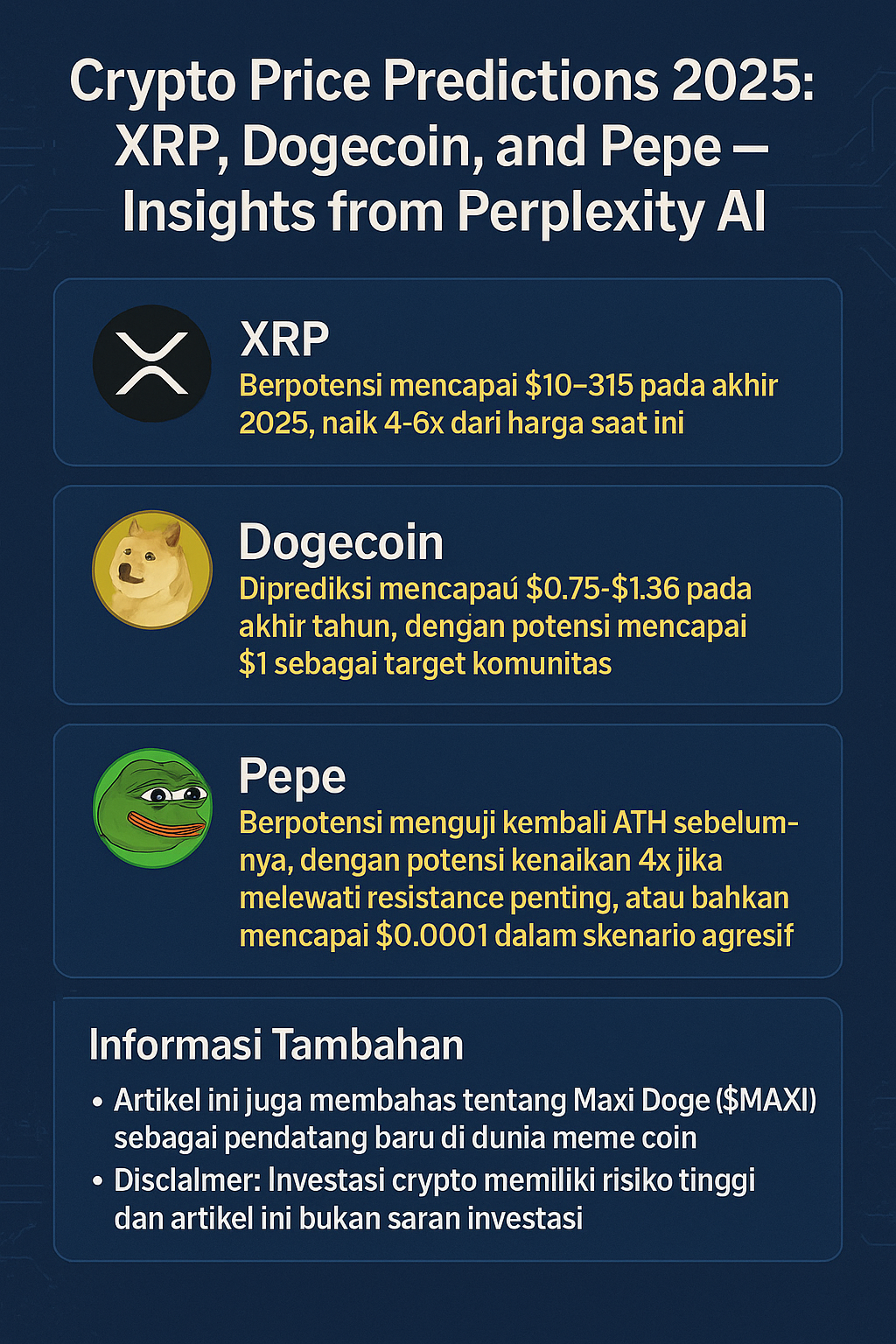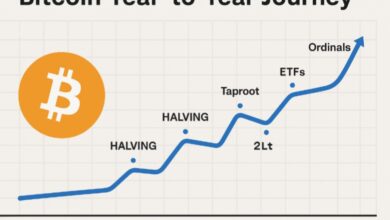Instagram’s New PG-13 Rules: How Meta Is Tightening Safety for Teen Users

Introduction: A New Era of “Safer Scrolling”
Instagram is taking another big step toward protecting its youngest users. The platform, owned by Meta, has announced stricter content restrictions for teenagers, aligning its “Teen Accounts” settings with the PG-13 movie rating standard.
This means millions of users under 18 will soon experience a more filtered version of Instagram — where mature or sensitive content becomes harder to stumble upon. The move follows growing public and political pressure over the platform’s impact on teen mental health and online safety.
But will this PG-13 approach actually make Instagram safer — or is it just another layer of moderation that’s too little, too late?
Why Instagram Is Changing Its Teen Policies
The change comes in the wake of multiple reports questioning whether Instagram’s “teen account protections” are truly effective.
Investigations by U.S. regulators, watchdog groups, and journalists have accused Meta of failing to shield minors from harmful content — including exposure to eating disorders, self-harm posts, explicit material, and online grooming.
In response, Meta has been steadily tightening restrictions for young users, introducing parental supervision tools, age verification systems, and limits on direct messaging with adults.
Now, Instagram’s latest update goes a step further by automatically applying a PG-13–style filter to all accounts belonging to users under 18.
What the New PG-13 Standard Means
Under the new system, Instagram will limit exposure to violent, sexual, or suggestive content that wouldn’t be suitable for a 13-year-old in a movie theater.
Here’s what users can expect:
Posts or reels containing explicit language, nudity, or graphic violence will be hidden or blurred by default.
Search results, recommendations, and the Explore tab will exclude mature content categories.
Teen accounts will have tighter privacy controls, limiting who can message or tag them.
Notifications encouraging excessive screen time or “late-night scrolling” may also be reduced.
Meta described the change as part of its ongoing effort to make online spaces age-appropriate, especially for teens navigating complex digital environments.
Automatic Rollout for All Teen Users
Perhaps the most significant part of this update is that it will be applied automatically.
Teens won’t need to opt in — Instagram will implement the new safety settings for every account belonging to users under 18 years old, based on their registered birth date.
If a teen’s account is linked to a parental supervision account, they can switch back to previous settings — but only with explicit parental approval.
This balances autonomy and oversight: teens retain some control over their feed, but parents get a formal role in deciding how much exposure their kids can handle.
Where and When the Changes Begin
Instagram will begin rolling out these restrictions in the United States, the United Kingdom, Australia, and Canada, starting Tuesday.
Meta says the global rollout will follow within the next few months, reaching millions of teenage users across Europe, Asia, and Latin America before year’s end.
This gradual release allows the company to test the system’s accuracy — particularly in detecting users’ ages and filtering content effectively across multiple languages and cultural contexts.
Meta’s Broader Push for Teen Safety
This isn’t the first time Meta has restructured its approach to young audiences. Over the past two years, the company has introduced:
“Quiet Mode” to reduce notifications and limit engagement late at night.
Stronger parental control dashboards on both Instagram and Facebook.
AI-driven detection tools to identify underage users or harmful interactions.
Still, critics say that these measures have not kept pace with the speed at which risky trends and viral content spread on social media.
Groups like the Center for Countering Digital Hate (CCDH) argue that algorithms continue to recommend harmful material — including body image issues and extreme dieting content — to minors.
The PG-13 Debate: Helpful or Hollow?
Some safety advocates have welcomed the PG-13 model as a simple, relatable benchmark for parents and teens alike.
By aligning with a familiar movie rating, Meta can communicate restrictions in a way most families understand — “If your child wouldn’t see it in theaters, they shouldn’t see it online either.”
However, experts caution that the internet is far more dynamic than a movie screen.
Dr. Melissa Grant, a digital wellbeing researcher at Oxford University, notes:
“Applying a movie-style age rating to social media is symbolic, but not foolproof. Algorithms learn faster than humans, and harmful content often slips through filters before moderation tools catch up.”
There’s also the issue of age misrepresentation. Many teens still lie about their age when signing up, making enforcement a technical challenge. Meta’s new AI-based age estimation tools may help address this, but skepticism remains high.
Public Reaction: A Divided Response
Parents and advocacy groups have largely praised the effort, seeing it as a long-overdue recognition of the risks young people face online.
On the other hand, some teenagers — and even free speech advocates — argue that over-filtering could stifle creativity and self-expression.
Social platforms have long struggled with balancing protection versus autonomy. Teenagers don’t just use Instagram to scroll; many use it to learn, create, and express ideas about identity, art, or social justice.
Critics fear that by over-restricting what young users can see, Instagram might sterilize the platform’s cultural relevance for an entire generation.
What This Means for Parents and Teens
For parents, the change provides a new opportunity to engage in digital education. By linking their accounts through Meta’s Family Center, they can:
Monitor what type of content their teen interacts with.
Set time limits and usage boundaries.
Discuss why certain restrictions exist — turning safety into a shared learning experience.
For teens, it’s a reminder that online spaces are evolving to better reflect age-appropriate standards. While the PG-13 model may seem restrictive, it’s also designed to protect mental well-being during a critical stage of development.
Conclusion: A Step Forward — But Not the Final One
Instagram’s new PG-13 safety policy marks a meaningful shift in how tech giants define responsibility toward young users.
By defaulting to safer settings and making parental consent part of the process, Meta is moving toward a more transparent, family-friendly social environment.
Still, the question remains: Can algorithms ever truly replicate the judgment of a parent or guardian?
Until social platforms fully solve that puzzle, these measures — though imperfect — are steps in the right direction.
Final Thoughts and Recommendations
For parents:
Stay involved. Use Meta’s parental tools and have regular conversations about online habits.
Educate, don’t just restrict. Teach critical thinking so teens learn to recognize unsafe content themselves.
For teens:
Embrace safe browsing. Think of these new filters not as limits, but as guardrails that help you explore responsibly.
For Meta and other platforms:
Keep transparency front and center. Regularly publish reports on how content filters perform.
Collaborate with independent researchers to assess mental health outcomes for teen users.
Because at the end of the day, a safer internet isn’t about censorship — it’s about care.











